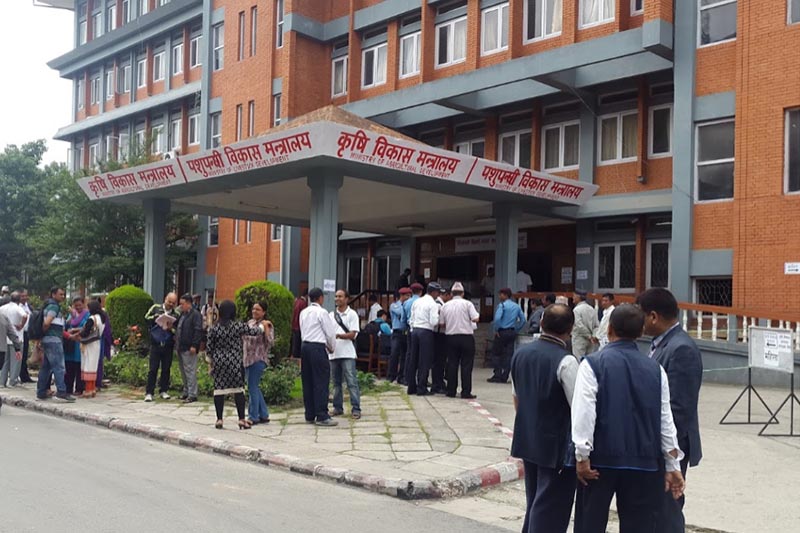Chemical fertiliser factory not feasible, say stakeholders
Kathmandu, April 4
Every year Nepali farmers have been facing shortage of chemical fertilisers. Although the government promises to supply fertilisers on time every year it has not been able to do so till date.
Aiming to address this issue the government has had plans to establish a chemical fertiliser factory since the last few years.
The establishment of a fertiliser blending industry was also presented under the investment potential and opportunities title during the Nepal Investment Summit 2019.
Several studies have also been conducted to look into the possibilities of establishing a chemical fertiliser factory in the country. The latest study was done by the Investment Board Nepal in 2015 based on which the factory proposal was presented at the investment summit.
However, stakeholders say that such a factory will be very expensive for Nepal to establish and giving continuity to it will be even more difficult. Moreover, the government needs to actually think about making the country chemical free rather than establishing a chemical factory, stakeholders say.
“On one hand the government states of making Nepal an organic country while on the other hand it takes the initiative to establish a chemical fertiliser factory,” said Uddav Adhikari, president of National Farmers Group Federation (NFGF).
The election manifesto of the ruling party had promised to make Nepal a chemical fertiliser free country in the next 10 years. It has also been frequently talking about transforming the agriculture sector into an organic one.
Hence, the government’s plan to open a chemical fertiliser factory is contradictory to what it has been saying, as per stakeholders.
Moreover, stakeholders have said that a chemical fertiliser factory is in reality an over ambitious target of the government.
According to Adhikari, annual demand of chemical fertilisers in the Nepali market stands at around 350,000 tonnes but the factory will have to produce over 700,000 tonnes annually. In this scenario, setting up the factory will not be feasible.
“Building such a factory is an expensive affair and it would be better if the government invested that amount in other areas for the development of the agricultural sector.” Moreover, since the rampant use of chemical fertilisers has been reducing the productivity of arable land, the government needs to think of ways to save such land, Adhikari added.
“Before setting up the factory the government needs to first analyse market demand and consumption pattern,” he said, adding, “Nepal cannot afford a chemical fertiliser factory and the government should rather think of organic technologies.
Even countries like India import chemical fertilisers to meet their demand.”
“The major component for a chemical fertiliser factory is natural gas that Nepal has to import and if the government fails to import the required quantity of natural gas then the factory will be useless,” said Suroj Pokharel, former agriculture secretary. Operating the factory through the use of coal or electricity will not be economically viable, he added.
“Since Nepal is primarily an agricultural country, it would be better if the government uses the country’s natural resources to produce organic fertilisers,” he said.
According to the Ministry of Agriculture and Livestock Development, investment of around Rs 100 billion is needed to build the factory. “It is not impossible for Nepal to establish a chemical fertiliser factory.
It is just that the government has to be prepared to overcome all the challenges,” said Tej Bahadur Subedi, spokesperson for the ministry.
He added that along with building the factory the government needs to guarantee the availability of natural gas and raw materials so that the factory can be operated in a full-fledged manner throughout the year. Subedi, meanwhile, revealed that the production of the factory would be way higher than the domestic demand, hence, if the factory fails to export the fertilisers it will go into a huge loss.






